Yosemite Valley Floor Trail
Besides two small inclines, the paved bike path on the Yosemite Valley Floor was virtually flat for miles. There were even a few meadows with elevated accessible platforms and other side trails along the Valley Floor.
Many of Yosemite’s famous landmarks can be seen from this trail, like Half Dome, Yosemite Falls, and the Merced River, and of course, wildlife was all around. Deer were frequently gathering on or near the path, making photo ops too easy. The only non-accessible portion on the Valley Floor was observed at the Superintendent’s Bridge due to steps.
Also on the Valley Floor is the Amsel Adams Gallery, where photography walks begin. The Photography Walk was sponsored by the gallery, which meant that it was free and consisted of a stroll through a meadow with a photographer pointing out the famous shots as well as giving technical tips for photo quality and subject diversity. The meadow was beautiful and filled with all kinds of incredible things to take photos of, and then we pushed away from the group. The pathways taken were all wheelchair accessible.
Yosemite Fall
Lower Yosemite Fall is very accessible for someone exploring in a wheelchair. The paved trail to the fall is about 0.5 miles and is flat most of the way. Near the final lookout point, there is a slight incline at a 15-degree angle. The journey to Yosemite Fall is beautiful as one wanders past the stream created by the fall and trees. The path maneuvers one over rivers and large boulders. The best time to visit the fall is in the spring after the melted winter snow brings roaring life back into it. Before heading to the fall there is wheelchair accessible restroom to the right of the trail if needed.
Bridaveil Fall
Bridaveil Fall has a paved walkway to the base of it. It is only flat for a small part of the way and then the pathway begins to incline. At first, it is gradual but right before you are in front of Bridaveil Fall there is a steep turn. For those using a power chair or who have exceptionally strong arms, the walk is doable alone. For everyone else, a push is likely to be needed as well as guidance back down the trail. Also when one gets close to the falls be prepared for a wet surface and wheels skidding, so take it real slow.
Mirror Lake
To get to Mirror Lake visitors with accessibility needs can take the restricted road to the top of the trail. The road runs parallel to the trail that the able-bodied folks were hiking up. At the top, adjacent to the accessible restroom was the handicapped parking spot. When we got out of the car Mirror Lake was right there, though pretty dry as expected in the fall. It was so dry that beaches formed. The trail splits with one side being more accessible than the other. Further up this path, Mirror Lake gets fuller, turning into a giant mirror reflecting the famous rocks surrounding it.
Happy Isles
Just a short drive back down the road, we took the first fork in the road towards Happy Isles and the Nature Center. This area also has a wheelchair accessible parking spot and restroom. One can take a paved trail loop to the Nature Center. Just before the Nature Center, there is a bridge off to the right, actually two bridges, that goes over the active Merced River. This pathway is not noted in the park access guide to be accessible but it is worth checking out for spectacular views of the river. After the two bridges, there is a packed granite pathway that runs along the river that was pretty accessible. In some areas, the walkway would get fairly thick but was well worth the challenge. We didn’t follow it the whole way though I wish I would have but I was already physically tired and in serious need of food.
On the way back to the car we took the non-accessible paved route. It ran along the river and since it was paved I thought it was the accessible one but it wasn’t. With the car in sight we were close but then a small cluster of rocks appeared on the paved trail; no area less cluster than another, no “easy” route. I gave the path one more look and went off the path to the forest floor covered in pine needles, sticks, acorns, and whatnot. The forest debris created a dense blanket that was easier and a shorter distance than trying to climb over rocks again. Feeling and hearing the earth crunch beneath my wheels provided me with the sensation and connection to hiking. I loved it.
Wawona Tunnel Overlook
The Wawona Tunnel Overlook is one of the best views accessible to the wheelchair traveler, including El Capitan, Half Dome, and Yosemite Valley. There is handicapped parking and a cemented lookout platform to capture a timeless photo and see from a bird’s eye view how the forces of nature created such a grand spectacle.
Glacier Point
Glacier Point overlooks the valley, two waterfalls, and Half Dome. The goal was to reach my destination at sunset. The drive to Glacier Point from the Valley Floor took approximately 45 minutes. The road was often windy while hugging cliffs or plowing through forests. On the way to Glacier Point, you will pass two other important overlooks. One is the Wawona Tunnel View Vista, which is right before you enter the tunnel and the other is Washburn Point and this vista is less than 2 miles from Glacier Point.
There are several handicapped parking spots near the entrance to Glacier Point along with accessible uni-sex restrooms. These restrooms, unfortunately, do not flush so as the day progresses the caliber of cleanliness declines. When you follow the paved trail you will first arrive at one lookout point, which is spectacular. A small paved trail to the right leads you to the top of the stone outdoor amphitheater. On the floor of the amphitheater is a fire-pit. To the left of this overlook, you’ll see that the paved trail continues in two directions and both are considered to be accessible as the sign will say.
However, the pathway to the right is a dramatic incline whereas the one to the left is much more gradual. Even though the trail to the left is easier than the right, it is still uphill and a good workout (300 yards). This section of the trail is what leads to what is known as Glacier Point and is a flat platform to enjoy the breathtaking views and take photos. A portion is not accessible due to stairs but there is still plenty of visibility. Photographers alike align the rails snapping dozens of shots, trying to capture the natural beauty of this national park. In the evening, the way the light dances on the rocks is the focus for photographers, and in the late morning, it is the illumination of waterfalls that is captured.
Mariposa Grove
All the hiking trails at Mariposa Grove are not wheelchair accessible, even the paved trail is too steep and too long for power wheelchairs; it goes to the top of the mountain. However, for a fee you can take the 1-hour tour in an open-air tram that is wheelchair accessible; headphones are available. With a handicapped placard, you can follow the tram for free and purchase the use of headphones if desired. Multiple trams travel up and down the designated one-way road and this involves coordination by radio when trams need to pass one another at specific spots. This is why the ranger will tell you that it is important to follow the tram exactly three car lengths behind but no more because you may interfere with another tram’s passage.
The reason why you follow 3 car lengths behind is that the tram stops frequently while the guide points out and describes the most well-known trees of the forest, including the Clothespin, Telescope, and Grizzly Tree. It’s easy to fall behind the tram if you are taking pictures but do your best to keep up. Further up the mountain, you will run into a fork in the road, the tram takes the one on the left and then loops around and stops at the Mariposa Grove Museum. This is the first of two 10-minute stops the tram makes. The museum is a replica of Galen Clark’s cabin with a few small displays of information.
For those riding the tram or following behind, you have the option of waiting an hour for the next tram to stop at the museum which will then escort you down the mountain. My friend and I took advantage of this and enjoyed a long lunch on our laps under the canopy of redwoods. On the way down the mountain, the second stop is at the Grizzly Tree, the most famous sequoia at Mariposa Grove. It is the oldest tree in the grove at 1900–2400 years old and the 25th biggest in the world. Some of the Grizzly’s branches are even bigger than the trees surrounding it. The pathway to the Grizzly is bordered and made up of packed granite rock. The trail is really short, about 100ft, and has only a few small dips. The size of it is so surreal. The Grizzly Tree is a giant, taking over all that’s around it.
The road through Mariposa Grove is only open April-November and is closed during winter due to unsafe conditions caused by natural elements. During the summer months, when the tourist season is at its peak, the two handicapped parking spots fill up fast but there is an accessible tram that can take you from the bus stop next to the Wawona Hotel store and gift shop to the Mariposa Grove parking lot. If you do get one of the handicapped parking spots then please note that they are on a 5.4% cross-slope. Wheelchair accessible uni-sex restrooms are right near these parking spots but like many natural attractions around Yosemite, they are not flush toilets. So hold your breath and bring hand sanitizer.
Tuolumne Meadows
Off Highway 120 East and about 1.5 hours from the Valley floor is Tuolumne Meadows. The meadow was not accessible, but the drive alone may be worth it for some, especially in the spring when flowers are in bloom. It was very scenic with towering trees and cascading rock formations fluttering in my eyes. At one point there was a lovely pond, worth photographing, and later the beautiful Tenaya Lake which was worth photographing. Further along the way, we were able to experience controlled burning by the fire department. This is when portions of the forest are burned on purpose to prevent larger fires from taking place. This has never made sense to me for several reasons.
There is an accessible restroom at the Tuolumne Meadows Visitor Center as well as at some of the trailheads off Highway 120 East. The accessible restroom is marked with a universal sign. Some trails were paved but for how long and what is seen remains unknown at the moment. Over time, however, I hope to uncover more of such trails.
Hetch Hetchy
Hetch Hetchy is located about a mile before the Yosemite National Park gate. It has its entrance gate which means a fee; however, being disabled allows you free entrance into any national park with a lifetime Access Pass. After you pass the gate, the road to Hetch Hetchy is about 10 miles but takes a little over half an hour because the road is windy.
There is no accessible parking near the dam. We parked off the side of the road where it was level, giving enough space for other cars to pass, and still needed to climb up a small hill to get back to the car. The only accessible restrooms are located at the backpacker’s parking lot and the ADA-renovated picnic area. There is not much shade along this trail or drinking fountains. In the spring there are two smaller waterfalls along the way to Wapama Fall as well as wildflowers. Again, this is another reason why late April to May is a great time to visit Yosemite.
At the ranger station, I was given a map of the area and saw that there were three waterfalls. As the car scaled the mountainside to the parking area I could see one waterfall in the distance. After a picnic, we headed down to the dam, walked across its paved sidewalk and headed into the tunnel, which was the challenge. At first, it was fairly paved with small rocks always to look out for but then it greatly minimized to the far right side until it disappeared. Then it was necessary to do a wheelie for the next fifty feet. When we emerged from the tunnel we were greeted by a glorious view of the lake and sat there for a while to admire it.
The densely-packed granite trail at Hetch Hetchy continued to the waterfalls with small rocks and tree roots dispersed sporadically. Eventually, it turned into the Wapama Fall Trail, reportedly a five-mile round-trip moderate hike (2 hours) for an able-bodied person. We did not venture this but know some moderate inclines wouldn’t be a problem for a power chair but a manual one may need assistance based on physical strength and endurance.





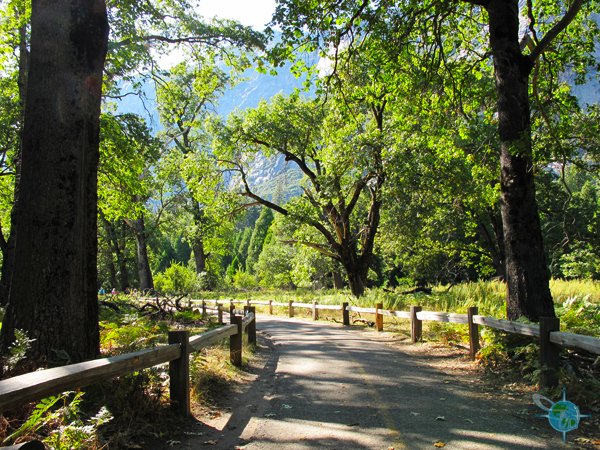












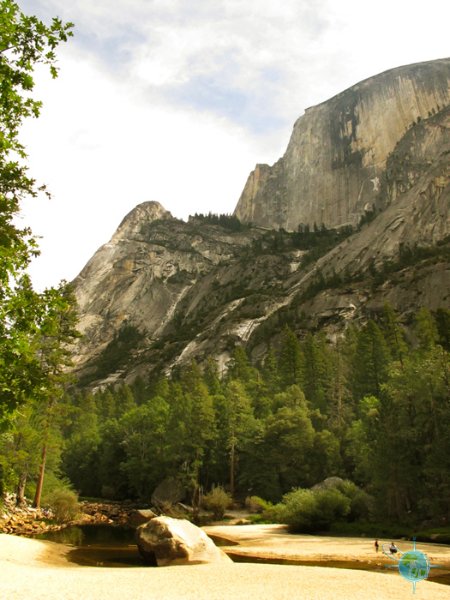















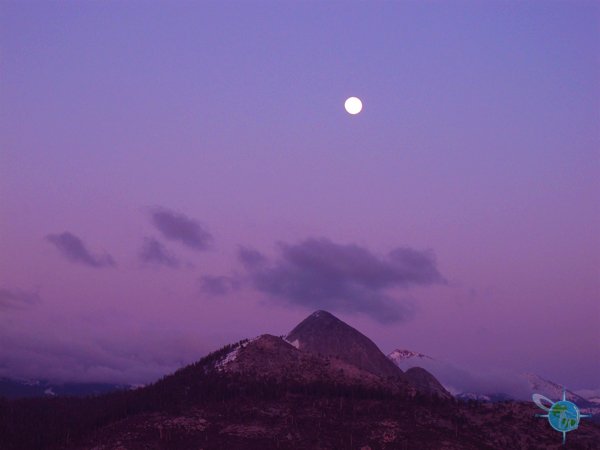















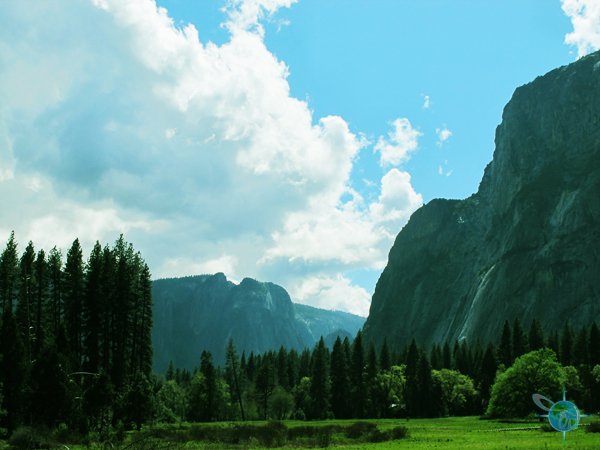


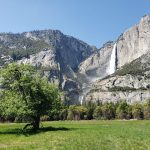












Thanks for the fabulous info!! Planning a trip there soon.
I LOVE it there! You are going to have such a great time.
Want to print out this section on wheelchair accessiblity trails. Why can’t I do it?
Hi Betty! On the side of the screen there area a few icons, mainly for sharing, but the very top one (in green) is of a printer icon. You can click that and the info will load into a page you can print.
Here’s a screenshot too, in case it helps.
Thank you for this information. It is out of date. Please check the Yosemite Accessibility Guide for more up to date information. Update should be online by summer 2022. Email questions to yose_accessibility@nps.gov
Thanks Kara. What do you read that’s incorrect? Yosemite does such a nice job keeping access updated. Love Yosemite.
Thanks for this fantastic information. You have really helped me plan my accessible vacation with confidence!